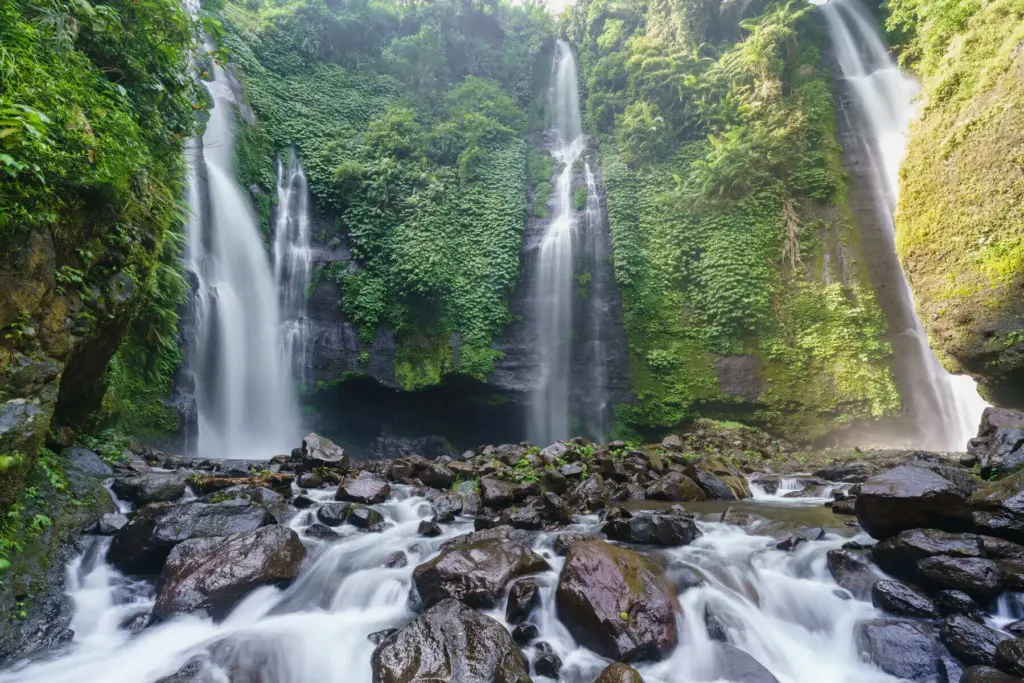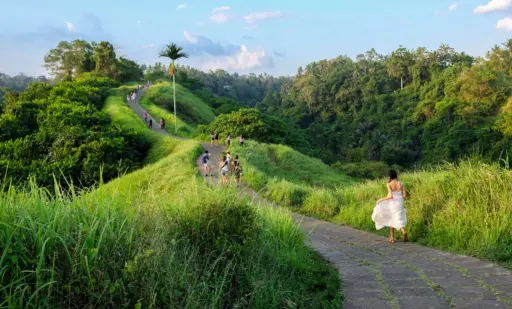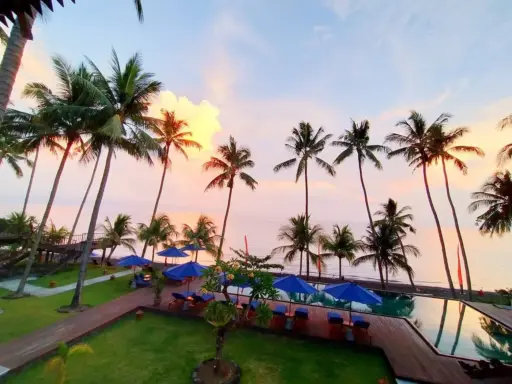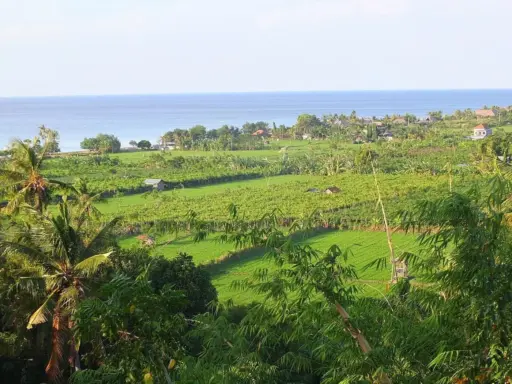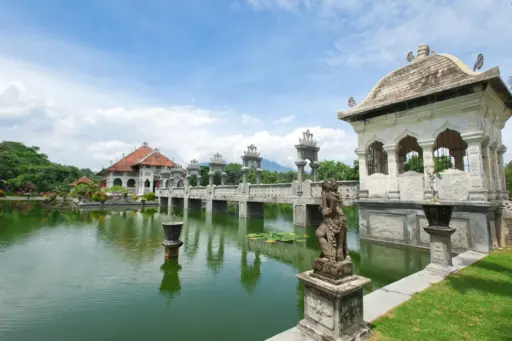Bali’s waterfalls offer jungle escapes, scenic swims, and sacred moments – nature beyond the beaches, beautifully flowing.
Bali is known around the world for its beaches, temples, and culture, but tucked into the heart of the island lies another kind of beauty – its waterfalls. Scattered across Bali’s central highlands and northern valleys, these cascades offer cool relief from the tropical heat, a peaceful connection with nature, and a glimpse of the island’s wilder side. Some are remote and hidden deep in the jungle, others are easier to reach, but all are worth the trip. Whether you are in search of a short walk to a swim spot or a full-day waterfall trek, Bali has a variety of stunning locations to explore.
The Mighty Falls of the North
Among the best-known waterfalls in Bali, Sekumpul Waterfall in the north often tops the list. Located in Buleleng, it is actually a cluster of seven streams plunging from high cliffs into a deep valley. To get there, visitors must navigate a steep path, river crossings, and forest trails. Local guides are usually required, and the effort is rewarded with a jaw-dropping view of one of Bali’s most dramatic natural sights. The lush green surroundings and constant mist in the air make it feel like you have stepped into another world.
Also in the highlands north of Ubud, Nungnung Waterfall offers power and height – dropping more than 50 metres into a jungle basin. The descent involves about 500 concrete steps, which makes the journey back up a sweaty one, but the roar of the water and the cool spray at the bottom make it worth every step. It is less crowded than some other falls, and the natural pool at the base is perfect for a refreshing dip.
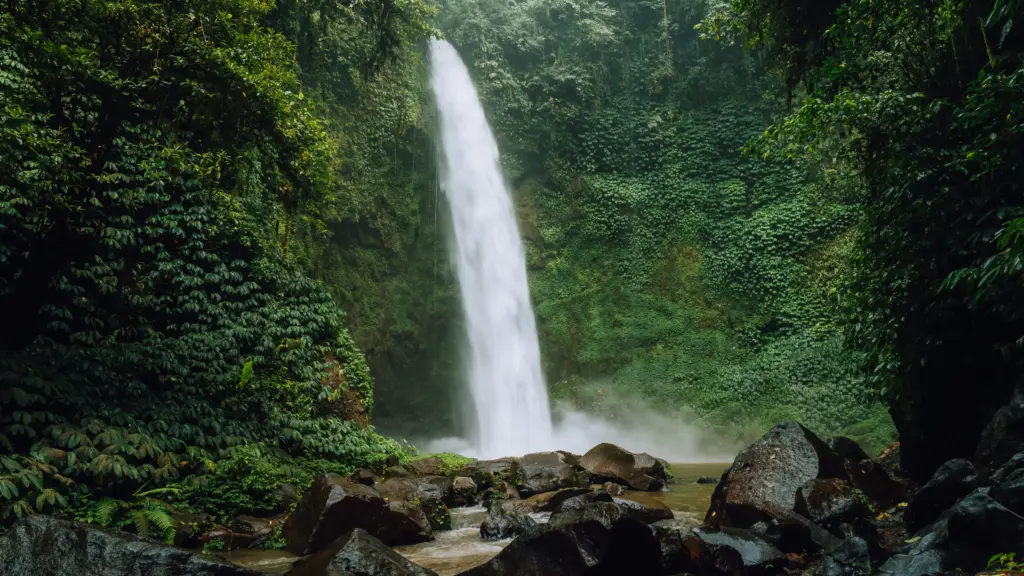
Closer to Ubud, Tibumana Waterfall is much easier to reach and ideal for a peaceful swim. Surrounded by tall cliffs and palm forest, the water flows gently over a wide rock face into a clear pool below. It is a sacred spot, used by locals for purification rituals, so visitors are asked to be respectful when bathing. The short walk to the falls is flat and well-kept, making it accessible for most fitness levels.
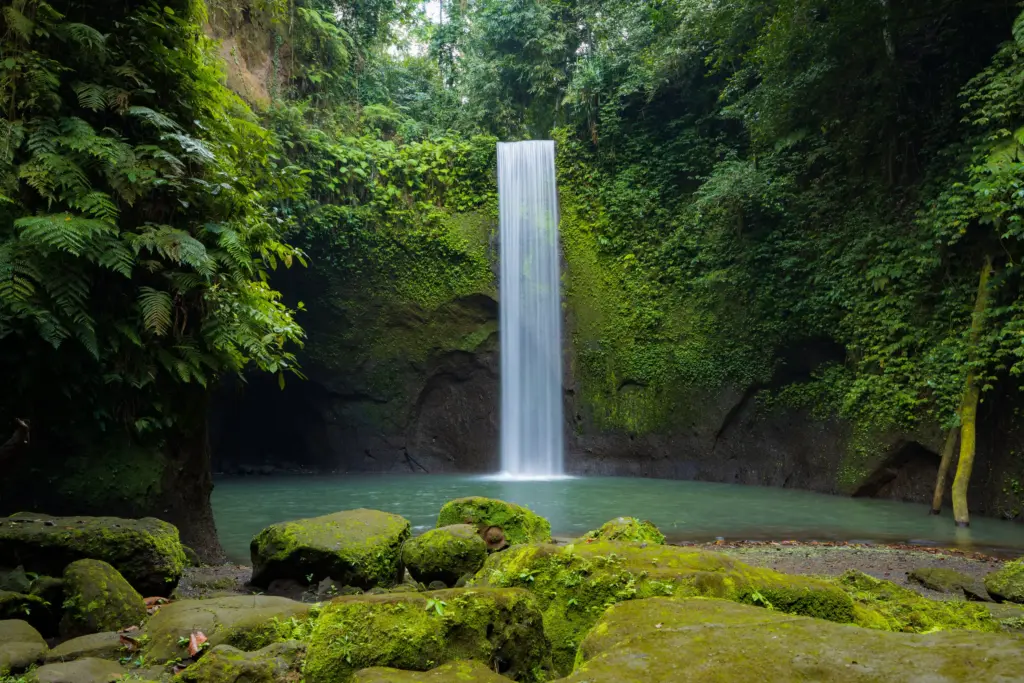
If you are heading to North Bali, Gitgit Waterfall is an easy stop near Singaraja. It has long been a popular stop on tours and is one of the more commercial waterfalls on the island, with stalls selling souvenirs and snacks along the trail. Despite its popularity, the main fall – around 35 metres high – is impressive, especially during the rainy season when the flow is strongest. Go early in the morning for fewer crowds and cooler temperatures.
Hidden Gems and Twin Streams
One of the quieter gems is Banyumala Twin Waterfalls, hidden near Munduk and the central lakes. It takes a bit of navigation to find the entrance, followed by a short but steep walk, but the payoff is worth it. Twin streams of water flow side-by-side down a mossy cliff into a shallow pool. The water is calm and clean, making it a great place for swimming or simply soaking in the peaceful jungle setting. With fewer visitors, it often feels like your own private oasis.
While each of these waterfalls has its own charm, Tegenungan Waterfall, located just 20 minutes south of Ubud, stands out for its accessibility and popularity. It is one of the few major waterfalls not in the mountains, making it easy to add to any day trip in central Bali. Located in the village of Kemenuh, Tegenungan doesn’t require a long trek to reach – just a 10-minute walk down a well-paved staircase from the parking area. Along the way, you will pass cafes, juice bars and platforms with great views of the falls from above.
Tips for Chasing Waterfalls in Bali
The waterfall itself is a wide, powerful cascade that tumbles into a shallow river pool, surrounded by cliffs and thick greenery. The water can appear brownish after heavy rain but is often clear during the dry season. Depending on the time of year, the current ranges from gentle enough for a swim to forceful enough that you will want to stay at the edge. There are large rocks around the base for sunbathing or taking photos, and the mist from the falls keeps everything cool.
Tegenungan is well-developed compared to many other waterfalls in Bali. There are cafés and small restaurants at the top, as well as changing rooms, toilets, souvenir stalls, and swing installations for those iconic Bali shots. A few venues, like D’Tukad River Club, offer elevated views of the falls along with food, drinks and even pools. It is a great option if you want to enjoy the scenery with a bit more comfort.
Visitors pay a small entrance fee, and additional charges apply for parking or if you want access to photo areas or certain cafes. The path is safe and well maintained, but shoes with grip are still a good idea, especially if you want to explore closer to the falls. Staff are often on site to monitor swimming conditions and can advise if it is safe to enter the water. While it is one of the busiest waterfalls on the island, Tegenungan still offers moments of quiet – especially in the early morning or later in the afternoon when the crowds thin out.
If you are planning to explore several waterfalls during your time in Bali, it is a good idea to base yourself near Ubud for access to Tibumana, Tegenungan and Nungnung, or in North Bali for trips to Sekumpul, Gitgit and Banyumala. Each region offers a different landscape, and visiting several falls across the island gives you a deeper appreciation for Bali’s varied terrain – from misty mountains and terraced valleys to rocky cliffs and volcanic slopes.
Practical tips make a big difference when visiting waterfalls in Bali. Wear shoes with good grip, especially if the path includes steep or wet sections. Bring a towel, change of clothes, water, and a waterproof bag for your phone and valuables. Entrance fees are usually small and paid in cash – so keep some small notes on hand. Most sites have basic toilet and change facilities, but it is best to come prepared.
Beyond their beauty, Bali’s waterfalls are often sacred places. Many are tied to local myths and used for religious ceremonies, especially purification rituals. You may see locals making offerings or dressed in temple clothes. Always be respectful – do not climb on shrines, avoid loud behaviour, and dress modestly if locals are present. The spiritual energy of these sites is part of what makes them so memorable.
Bali’s waterfalls offer more than just pretty backdrops. They are immersive, energising, and often surprisingly peaceful – especially if you are willing to go a little off the beaten path. Whether you are taking a quick swim at Tibumana, braving the long hike to Sekumpul, or snapping photos at Tegenungan’s roaring cascade, these natural sites reveal another side of Bali – one that flows, tumbles, and quietly carves its way through the heart of the island.
